Derain white "Elegantissima": description, features of planting and care
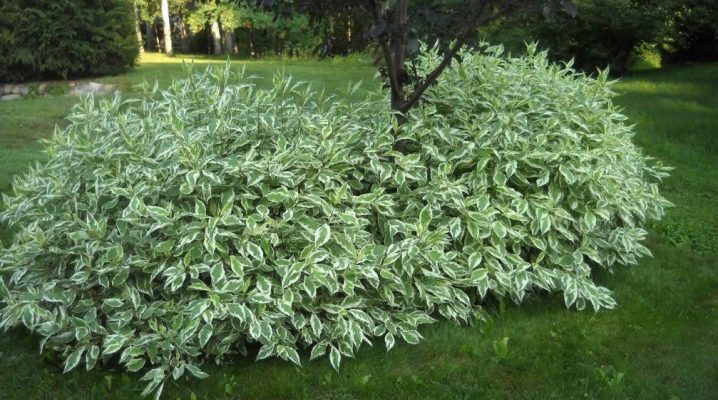
Many gardeners believe that the presence of ornamental shrubs on their personal plot is simply necessary. This creates the unique beauty of the landscape, its simplicity and elegance. Derain white "Elegantissima" is one of the favorite plants of garden design specialists and amateur gardeners.
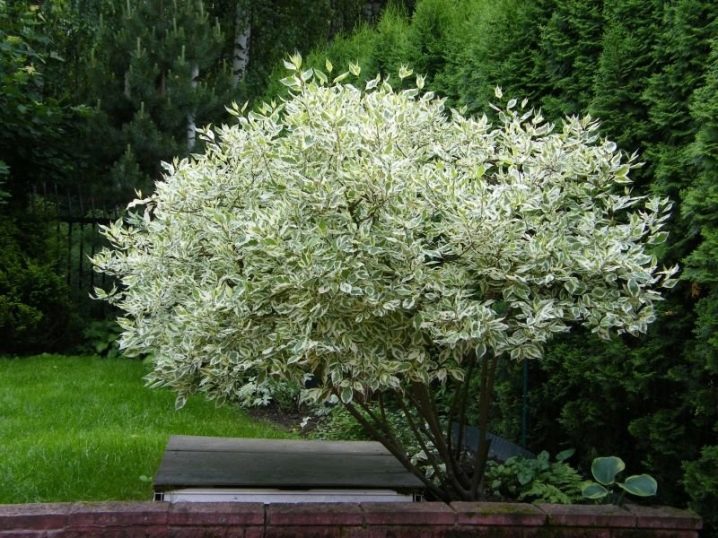
Description
Behind the dogwood, the name of the red was firmly entrenched among the people because of the red color of the bark of its shoots. It is so unpretentious to care that it perfectly survives in the wild in Siberian frosts. Derain white "Elegantissima", the Latin name Cornus alba Elegantissima, is one of the many varieties of this plant of the cornel family. It is a perennial deciduous shrub with large oval leaves 10-12 cm in size, framed by a creamy white border. On the olive-green background of the leaf plates, there are always spots, strokes and specks in the color of the border. The variegated color of the leaves is a sign of the high decorative effect of the shrub.
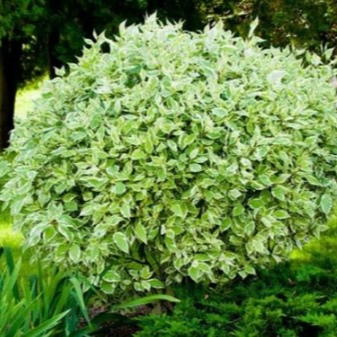

It blooms twice a year. The first time the lawn blooms in May, and the second time - closer to autumn. It is a very beautiful sight when the bushes are covered with many umbrella-shaped inflorescences, consisting of white flowers. Decorative beads of a bluish hue that appear after flowering are inedible. Sometimes the second time a white turf bush may not bloom if the weather during the season was unfavorable or the area where it grows is not sufficiently lit.
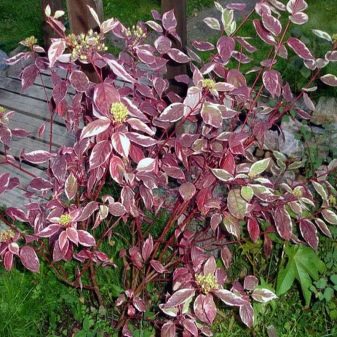
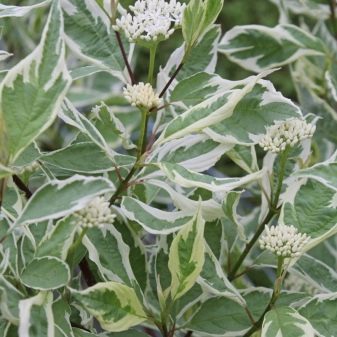
Derain easily tolerates the polluted air of the city and the high concentration of exhaust gases in it. The good winter hardiness of this species is an indisputable advantage in the conditions of our harsh winters.
Differences from other varieties
Different varieties of deren have a lot of similar botanical features, but the popular species "Elegantissima", "Sibirika Variegata" and "Aurea" differ significantly from each other.
- By the size of an adult plant - "Elegantissima" can grow in height up to 3 m, and "Sibirika Variegata" and "Aurea" only up to 2 m, in diameter they can grow up to 5 m and up to 2-2.5 m respectively.
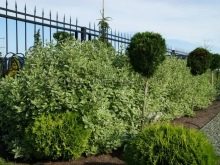

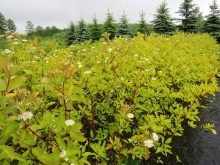
- By color of leaves - “Elegantisima” has leaves of a light olive-green color that does not change in autumn, “Sibirika Variegata” has dark green, towards autumn with a purple tint, and “Aurea” leaves change color several times during the season - at first they are burgundy-brown , then gradually turn green, then become lemon yellow, and in the fall again red. This property of the Aurea variety is very popular with gardeners.
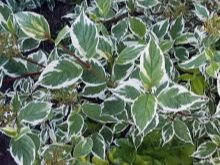


- The color of the inflorescences "Elegantissima" is white, "Sibiriki Variegata" - cream, and "Aurea" flowers are creamy white. When blooming, bushes of all varieties of deren with a pleasant strong aroma attract many bees to the inflorescences.

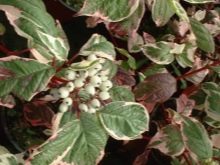
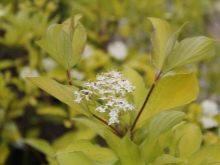
I must say that "Elegantissima" grows faster than its "sisters", forms a more lush crown and usually has much more berries on it.
Breeding rules
For propagation of a shrub, you can use seeds, cuttings and layering. All of these breeding methods can be practiced, but with varying efficiencies.
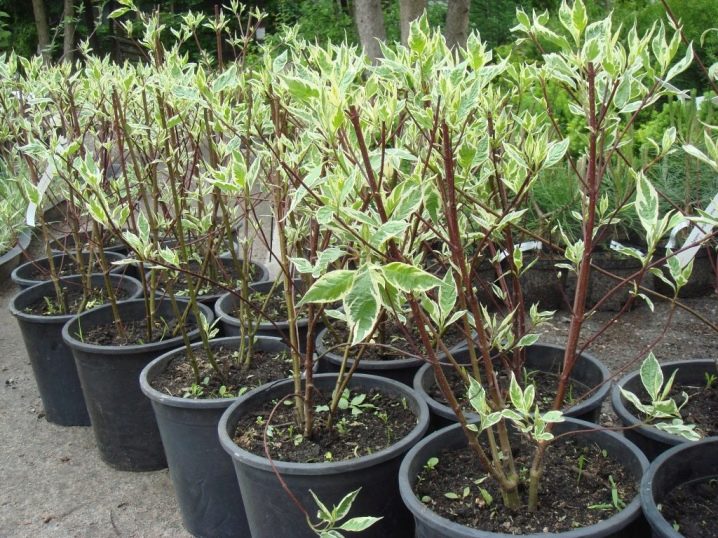
Seeds
Ripe seeds are harvested in the fall. Their germination can last up to 5 years, but to get a good result, it is better to take fresh ones and stratify them. To do this, place the seeds in a moistened mixture of sawdust, moss and peat and stand for 3-4 months at a temperature of 4-5 ° C.At home, a container with planting material can be placed in the refrigerator in the vegetable compartment. Seed stratification can also be entrusted to Mother Nature by planting them right into the ground before winter.
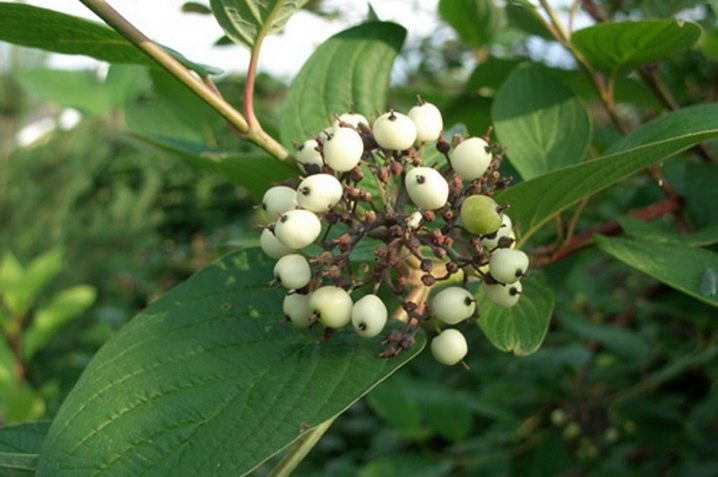
When breeding with seeds, plants develop very slowly and reach the parameters of an adult bush only 8-10 years after planting. This is the most laborious breeding method. It takes too long before the young bushes are planted in a permanent place, so this method is almost never used in practice.
Cuttings
Cuttings for planting should be prepared in the summer, at the end of June or at the beginning of July. For this, flexible shoots with mature wood, at least two internodes, are suitable. The selected branches must be cleaned of the lower leaves, and the upper ones must be cut in half. For root formation, cuttings are placed in water for about 7-9 days. The water level should be just above the lower internodes. When small roots grow a little (up to about 1 cm), the branches are planted in the ground until spring, preferably in a small greenhouse. It is important to know that when planting with green cuttings, plants take root with difficulty and can freeze out in winter.
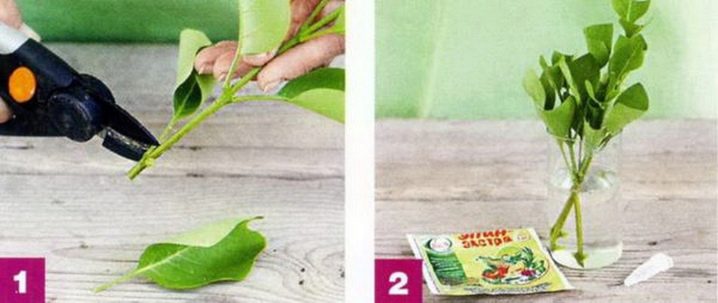
Two-year-old mature cuttings with lignified bark are much more hardy than green ones. They root well, as they have root buds along their entire length. In the spring, you need to choose a good, sturdy bush, cut off the shoot from it and bend it a little to check for suitability. An unsuitable handle will not fully unfold or break altogether.
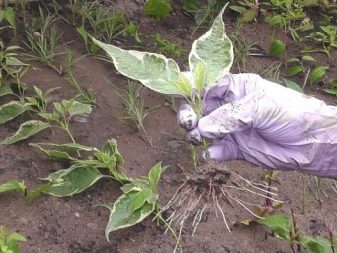
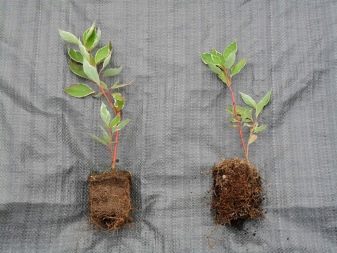
For the selected cuttings, a temporary planting site is prepared, these are boxes with nutrient soil from sand and humus. The soil is slightly moistened before planting, the cuttings are buried in the ground at an angle of 45 degrees. For the normal development of planting material, the soil is regularly sprayed, avoiding waterlogging. It is desirable to maintain the temperature regime of 20-35 ° C; for this, boxes with plantings are placed in a greenhouse. In the fall, the cuttings are completely ready for planting in a permanent place.
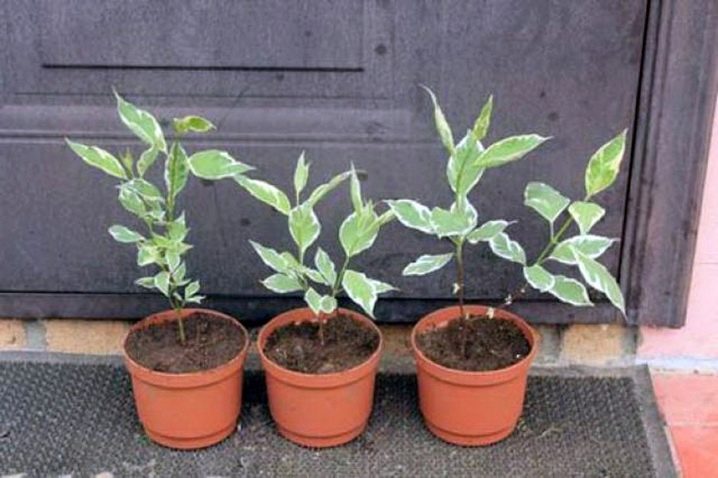
Layers
Reproduction by layering is the most optimal option for the Elegantissima variety. To do this, in the spring, you need to bend one young twig from the lowest shoots to the soil from an adult bush, dig it into the ground by about 10 cm and fix it with a metal "hairpin" or just wire. An indispensable condition for the successful formation of roots on the layer is the constant humidity of the place where the branch is buried, therefore regular and timely watering is necessary. The root system should be formed completely by autumn. A young bush can be planted from the mother in the same autumn, but experts recommend it is better to do this in the spring, when the cuttings get stronger.
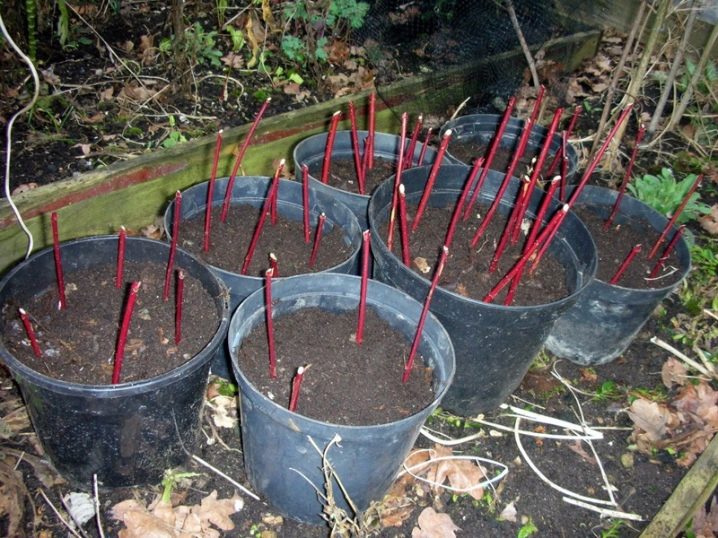
Landing subtleties
The “Elegantissima” turf becomes a flowering shrub three years after planting. The bush can grow up to 3 m in height and grow in one place for 50-60 years. This circumstance should always be taken into account when choosing a landing site so that the landscape composition remains harmonious for a long time.

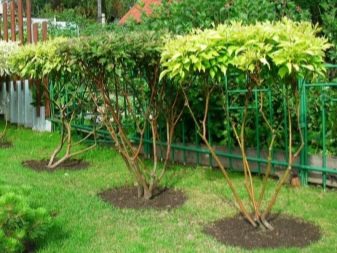
Derain "Elegantissima" grows best in open sunny or slightly shaded areas with fertile, moderately moist soilhaving a neutral or slightly alkaline reaction. The bush can also feel good on loam if it is enriched with organic matter (peat, compost) and fertilizing is applied correctly. Only sandy loam soil does not tolerate, since it is a moisture-loving plant, and sand does not hold water well.
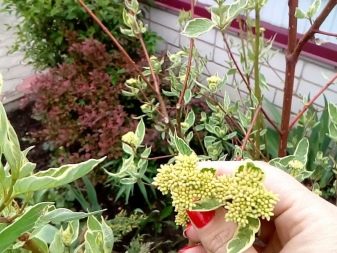
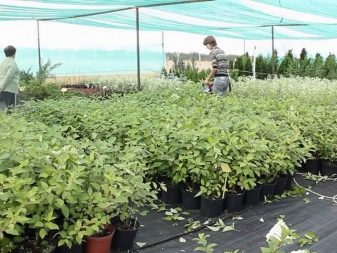
Planting deren seedlings should be treated with all responsibility. It is best to plant the shrub in the fall before the onset of cold weather, so that the root system will adapt well to the new environment and strengthen. Such a seedling will grow quickly in the spring. However, you can plant it throughout the growing season, with good care, the plant will take root and will actively grow. It will be necessary to carry out the following work.
- Approximately two weeks before the planting date of the Elegantissima deren, the site needs to be dug up and fertilized with mineral and organic fertilizers (wood ash, peat, last year's compost, humus). On such a site, the plants can not be fed for several years.
- First, you need to prepare a planting hole in size larger than an earthen clod on the roots of the seedling. If several plants are planted, the pits are placed at a distance of at least 1.5 m. The soil selected from the pit must be enriched with humus, complex mineral fertilizers and mixed well.
- With a high occurrence of groundwater, a drainage layer must be laid on the bottom of the pit (broken brick, expanded clay will do), fill it with prepared earth about half and water it abundantly.
- The roots of the seedling must also be properly moistened and left for 10-15 minutes.
- Then the turf, with all care, without damaging the roots, together with a lump of earth should be placed in the planting pit. The remaining soil is poured there and the near-trunk circle is carefully compacted with your hands.
- The plant is once again watered abundantly and mulched with a layer of sawdust or needles to protect the soil from drying out.
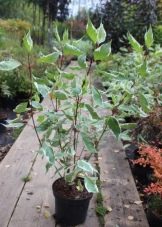
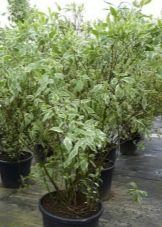
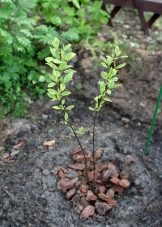
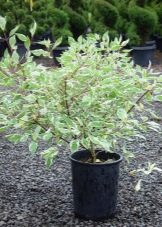
Care features
Sod care is minimal and does not require any special knowledge. Plants overwinter well and will not get wet in thawed spring waters. Any novice gardener can grow the most beautiful ornamental shrubs on his site without much hassle.
- The trunks of young bushes of the first year of life must be carefully loosened throughout the season so that air access to the roots is sufficient.
- The soil should always be moderately moist. Adult plantings do not need to be watered, they get by with moisture from the soil and from rains. However, in hot dry weather, you should still water the plantings once every two weeks with one and a half to two buckets of water per bush.
- Once every 3-4 years, the sod is fed with humus and wood ash. Top dressing improves the decorative effect of the garden landscape, the plants look well-groomed, elegant, healthy,
- The main element of the care of white grass "Elegantissima" is pruning, this variety easily tolerates it. Bushes begin to be cut from the age of 3, at the first pruning, 1/3 of all shoots are cut off, first choosing damaged branches. Derain white "Elegantissima" has the ability to grow very quickly in width, therefore, it is impossible to neglect formative pruning, so that the shrubs do not become impenetrable thickets and do not lose their attractiveness. It is best to do 2-3 pruning per season. Older bushes are pruned lower, leaving 15-20cm above the ground. You can use wood ash or crushed activated charcoal to treat the cuts to protect the plantings from possible infections. Once every few years, old plantings are renewed by completely cutting the bushes at the root, the turf is easy to use for this procedure and quickly grows back to its previous size.
- "Elegantissima" is almost not affected by pests, they are frightened off by the taste of its juice. The planting of turf aphids may be damaged. If it is found, it is necessary to urgently treat the planting with insecticides or use folk remedies such as a decoction of yarrow, an infusion of onions and potato tops.
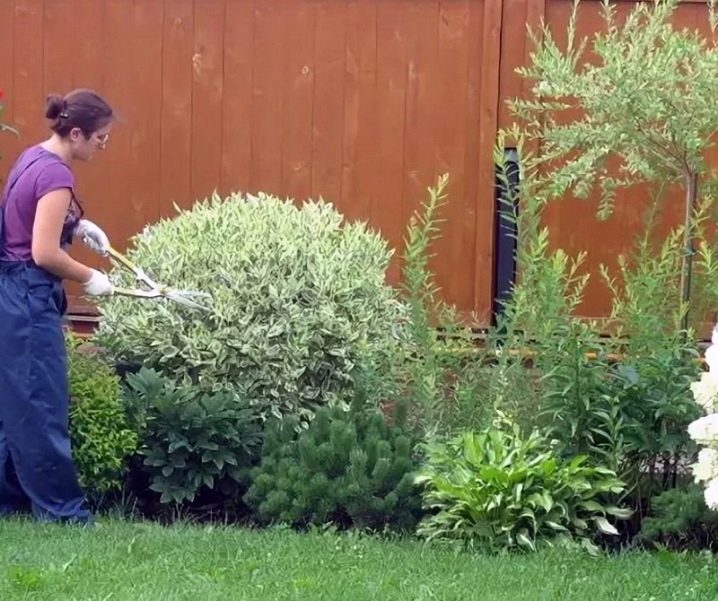
By observing these simple rules for caring for the lawn, you can constantly admire the unique design of your garden.
Application in landscape
The name of the variety "Elegantissima" fully justifies itself - on any site the plant will look noble and elegant. Its value for landscape design is due to the fact that the lawn is highly decorative, easy to cultivate, unpretentious in maintenance, decorates the garden plot both during the growing season and in winter. In spring, the garden landscape is enlivened with blossoming leaves, in summer and autumn - with lush flowering and elegant variegated foliage, and in winter, snow-white snowdrifts are decorated with expressive painting of purple-red shoots.

Various shapes are formed from the crown of the deren with the help of trimming - a column, a hemisphere, a ball, a cube. Experienced designers often experiment with pruning, change the shape of the bushes every year and can even create the figure of an exotic animal. Plantings look good on the site both alone and in group plantings. They are often used to create hedges or to camouflage outbuildings. An elegant and visually light bush "Elegantissima" can become an original decoration before entering the house.
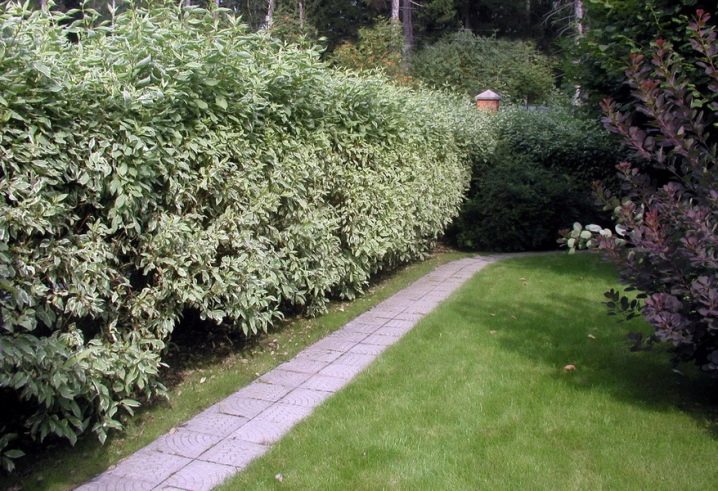
In combination with decorative conifers, such as juniper, or with shrubs with red leaves, the designers create unique compositions from the white "Elegantissima" deer that can arouse the admiration of the most strict connoisseur.
For information on how to propagate the white dogwood "Elengantissima" correctly, see the next video.

































































The comment was sent successfully.